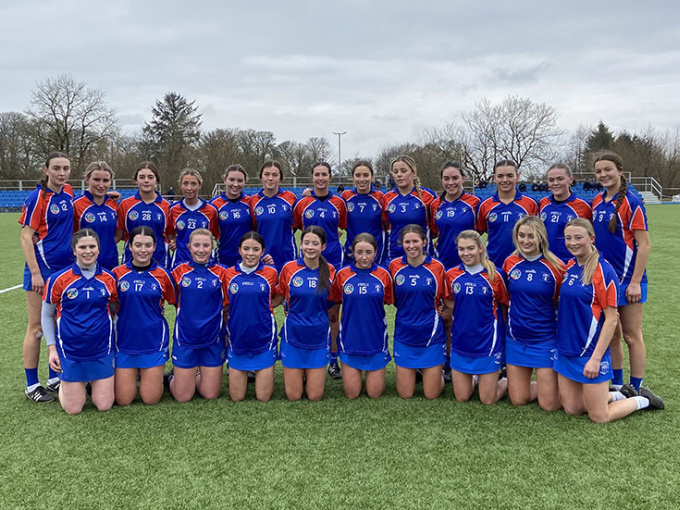
With the six nations rugby championship in full swing, teamwork is firmly in the mind of the general population. It is a process or skill that we often find intriguing as we watch sport.
Often times, we discuss why one team was able to function so well as compared to another. Words or phrases like ‘cohesive’, ‘in sync with one another’ and ‘playing for the team’ get mentioned when we discuss high performing teams. Conversely, phrases like ‘a bunch of individuals’, ‘playing for themselves’ and ‘disjointed’ come to mind when we discuss poorly performing teams.
Similarly, students at university often have both successes or failures when working in teams. Teaching staff in Higher Education often hear students say that they dislike working on team-based assessments as they are concerned about others not pulling their weight, difficult conversations and the potential impact on their grades. Why wouldn’t Irish students struggle with teamwork, as little (if any) of the leaving certificate examinations involve working as part of a team?
Nonetheless, given that teamwork is always listed as one of the key skills that students are expected to acquire at university (Robles, 2012; Jackson, 2010; Curry et al., 2003), how can students learn from the psychology research literature to make their teamwork experience an enjoyable one and reap the many benefits of teamwork? As we go through the teamwork research literature in this blog, we’ll aim to provide you with some tips for students.

To begin with, it is important to highlight that beyond informal chats about successful or unsuccessful teams, there is a whole area of psychology dedicated to teamwork. Broadly speaking, this area of psychology is called group dynamics and is “dedicated to advancing knowledge about the nature of groups, the laws of their development, and their interrelations with individuals, other groups and larger institutions” (Cartwright & Zander, 1968, p. 7). From this literature, students can learn a great deal about working as part of a team.
Team Development
So, what are some of the key elements of teamwork? Firstly, a team has to develop and there are some key steps involved in team development. According to Tuckman and Jenssen (1977), these steps involve;
- Forming (teammates familiarising themselves with each other and developing bonds)
- Storming (tensions and conflict arising)
- Norming (cohesion and group harmony occurring)
- Performing (stable relationships and good team performance)
- Adjourning (contact decreases and dependency reduces)
The obvious goal during this process is for a team to get to the performing stage as quickly as possible. This is why newly formed teams will put much stock into team building activities such as social events, matching team attire, formal team discussions or meetings, and team goal setting. All of these activities are designed to enhance a team’s distinctiveness and togetherness, clarify team/individual goals and norms, and facilitate team communication (Carron et al., 1997).
For students, the early steps in their team’s development should involve an informal chat to familiarise themselves with each other (i.e., get to know each other over a coffee or tea), the facilitation of team communication (i.e., set up a WhatsApp group where team members can communicate easily), and a team meeting to clarify team roles or norms (i.e., figure out who will do what and when).
 MIC Senior Camogie team, winners of the Purcell Cup 2025
MIC Senior Camogie team, winners of the Purcell Cup 2025
Team Roles & Norms
Team roles and norms are particularly important and are where a lot of teams can fall down. Both formal (being the note taker) and informal roles (being the tension breaker) are particularly important within teams. According to Carron and colleagues (2005), it is crucial that team members have;
- Role clarity (know what is expected of their role)
- Role efficacy (feel confident they can fulfill their role)
- Role acceptance (fully accept the role they are undertaking)
- Role satisfaction (are satisfied with and enjoy fulfilling their particular role)
For students, the first team meeting and follow-on meetings should ensure that everyone within the team is;
- Clear on their role (write it down in the group chat)
- Feels confident they can do such as role (check to see if each team member is confident in what they are expected to do)
- Accepting and satisfied with their role (check this periodically to ensure everyone is happy)
Norms are also important within teams and are defined as “standards for behaviour that are expected of group members” (Carron et al., 2005). In this regard, high performance teams tend to have positive norms around attendance, punctuality, effort, attitude, and respect for others (Munroe et al., 1999).
For students, within the first team meeting, they should agree on the group norms. This might involve everyone agreeing to attend team meetings on set dates/times during the semester, being 5-10 minutes early to meetings, willing to make the effort to write X amount of words for the assessment by a set date, remain positive in their attitude towards the group and group assessment, and respecting the opinions and wishes of every group member. Agreeing on these norms at the beginning can avoid a lot of issues at a later date.

Team Cohesion
A third important area of teamwork is team cohesion, which is defined as “a dynamic process which is reflected in the tendency for a group to stick together and remain united in the pursuit of its instrumental objectives and/or for the satisfaction of member affective needs” (Widmeyer et al., 1985). Team cohesion can be broken into two parts: task cohesion (i.e., how cohesive is the team in terms of fulfilling the team’s task) and social cohesion (i.e., how well do team members socialise with one another). Building team cohesion involves communicating effectively, setting challenging goals, explaining each group members role in the group’s success, encouraging team interaction, and avoiding social cliques (Weinberg & Gould, 2007).
For students, this would mean having a nice balance of in-person and online group meetings, group goals that are not too hard or too easy, explaining how all the different aspects of the task are important for the assessment, meeting socially and for the purpose of working on the assessment, and avoiding any divisions or cliques within the group.
Social Loafing
A fourth key aspect of teamwork is the idea of social loafing – a reduction in an individual’s effort or motivation when working in a group (Simms & Nichols, 2014). Often times, students complain about team members not putting forth adequate effort when working on a group assessment. As teaching staff, we’ll often explain to students that it is necessary to try and work with such individuals, as this is the reality students will face within the workforce (i.e., not everyone will put force their maximum effort on a group task). But what can be done to improve such a situation. According to Karau and Wilhau (2020), there are a few ways that social loafing can be reduced.
For students to reduce social loafing on group assessments, they could;
- Split the task into parts so that each student can make a unique contribution
- Explain to individual group members the value of their task
- Promote team cohesion by having the students get to know each other
Teaching staff can also seek to reduce social loafing by explaining that they will be looking at an individual’s contribution to the group assessment (I’ve seen teaching staff give individual and group marks for a group presentation) and telling the group that their performance will be evaluated in relation to other groups (a sense of competition often gets groups working effectively).
In summary, within sport, the workplace, and university, it is essential that people can work well as part of a team. Although it is important to acknowledge that teamwork can be difficult, there are practical ways that students can look to work effectively on their group assessments. By implementing such practices, it is hoped that students will have a more enjoyable teamwork experience and take the skills they have learned into their future careers and lives.
By Dr Lorcan Cronin, Lecturer in Psychology, MIC.
References
Carron, A. V., Hausenblas, H. A., & Eys, M. A. (2005). Group dynamics in sport (3rd Edition). Fitness Information Technology.
Carron, A. V., Spink, K. S., & Prapavessis, H. (1997). Team building and cohesiveness in the sport and exercise setting: Use of indirect interventions. Journal of Applied Sport Psychology, 9(1), 61-72.
Cartwright, D. E., & Zander, A. E. (1953). Group dynamics research and theory. Harper & Row.
Curry, P., Sherry, R., & Tunney, O. (2003). What transferable skills do employers look for in third-level graduates: Results of employer survey. Trinity College Dublin: Transferable Skills Project.
Jackson, D. (2010). An international profile of industry-relevant competencies and skill gaps in modern graduates. International Journal of Management Education, 8(3), 29-58.
Karau, S. J., & Wilhau, A. J. (2020). Social loafing and motivation gains in groups: An integrative review. In S. Karau (Ed.), Individual Motivation within Groups (pp. 3–51). Academic Press.
Robles, M. M. (2012). Executive perceptions of the top 10 soft skills needed in today’s workplace. Business Communication Quarterly, 75(4), 453-465.
Simms, A., & Nichols, T. (2014). Social loafing: A review of the literature. Journal of Management, 15(1), 58-67.
Tuckman, B. W., & Jensen, M. A. C. (1977). Stages of small-group development revisited. Group & Organization Management, 2(4), 419-427.
Weinberg, R., & Gould, D. (2007). Foundations of sport and exercise psychology. Champaign, IL: Human Kinetics.
Widmeyer, W. N., Brawley, L. R., & Carron, A. V. (1985). The measurement of cohesion in sport teams: The Group Environment Questionnaire. Sports dynamics.



